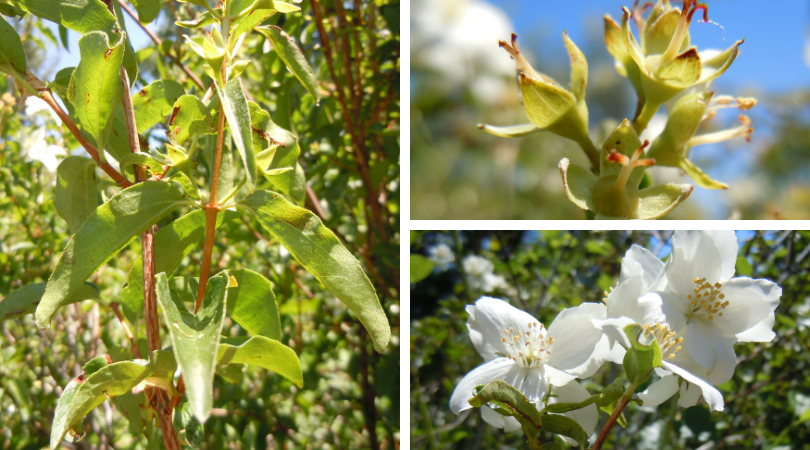Mock orange – Philadelphus lewisii
Mock orange is in the Hydrangea family and can be found in North America, from British Columbia down through California, and Idaho and Montana. While other varieties can be found throughout the world, 27 of these species are native to North America. It grows at sea level and elevations up to 8000 feet. The leaves are ovular and have tiny, pointed teeth. A useful way to help identify a plant in the winter when it doesn’t have its leaves is looking at the leaf and branch scars. Most of the plants in the Pacific Northwest have alternately arranged leaves, but mock orange is one of the handful that have opposite branching. In the winter, the stems look gray-brown and woody.
The plant blooms from May through July, and thrives in full sun to moderate shade in moist well drained soil. They live best in open woodlands and beside streams, but they make great garden hedges and shrub borders because they are so adaptable. As a fire resistant species, they will regenerate from the seed banks that build up in the soil.
Philadelphus lewisii is extremely useful and works well at maintaining soil erosion on hillsides and drier rocky slopes. It is a food source for wildlife and serves as the perfect cover from predators. Native Americans used the wood for bows, arrow shafts, and other products and tools. The leaves and white flowers contain saponins (a glycoside with a foaming characteristic), so when mixed with water can be rubbed in to a soapy lather like soap and can be used to wash the body and hair!
-By SHADOW Volunteer, Sandy Brecker



Recent Comments